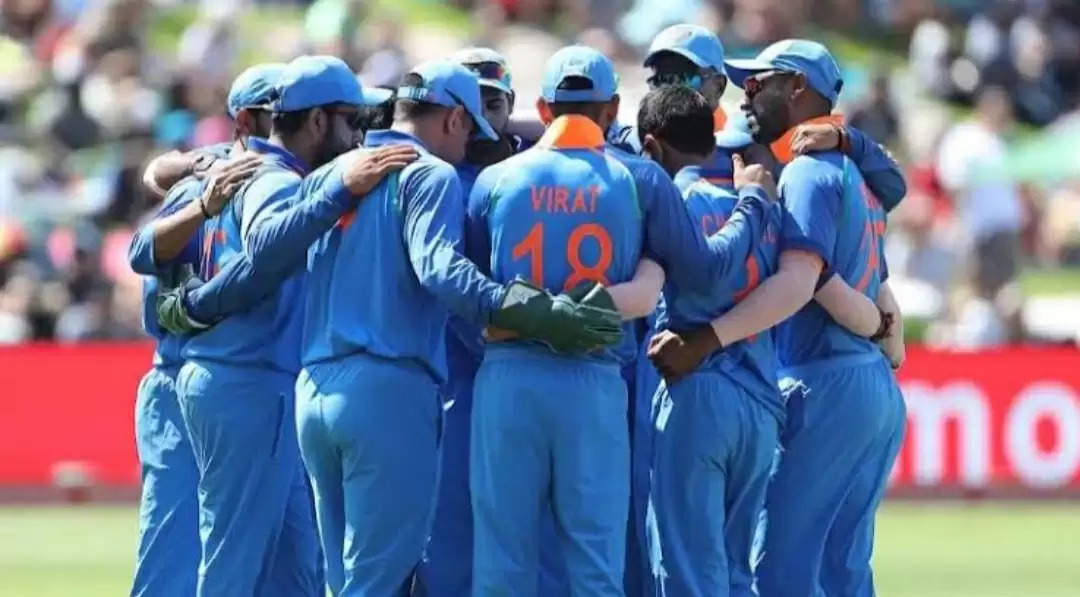Key Takeaways From India’s Squad For England ODIs

The BCCI on Friday (March 19) announced an 18-man squad for India’s three-match ODI series against England, scheduled to be played in Pune from March 23. The Indian squad retains a strong outlook, with proven experienced players joined by some fine young talents and consistent performers from recent domestic matches.
Here are the major takeaways from India’s squad for England ODIs:
1. Vijay Hazare Trophy performers rewarded
The selectors rewarded some of the consistent performers from the recently concluded Vijay Hazare Trophy, the country’s premier domestic List A competition. Spin all-rounder Krunal Pandya, pacer Prasidh Krishna and batsman Suryakumar Yadav received their maiden ODI call-ups.

Pandya was Baroda’s top run-getter for the tournament with 388 runs from his 5 innings at an average of 129.33 and had a strike-rate of 117.93. He got the nod as first-choice all-rounder Ravindra Jadeja remains in rehab following his thumb injury and couldn’t be selected for this series.
Krishna, meanwhile, bowled very well for Karnataka in the Vijay Hazare Trophy 2021. India picked the tall paceman after 14 wickets at an average of 22.21 and an economy of 5.44 in the tournament. His presence adds to the depth of the Indian pace attack in white-ball cricket.
The other player to be rewarded for quality performances in the recent domestic matches is Mumbai’s Suryakumar Yadav. The right-hand batsman made 332 runs in the Vijay Hazare Trophy with an average of 66.40 and a strike-rate of 151.59.
There was, however, no place in the squad for Prithvi Shaw, who dominated attacks in the competition with 827 runs at an astonishing average of 165.40 while carrying a strike-rate of 138.29. The Indian selectors couldn’t find an opening for Shaw at the top of the order where veterans Rohit Sharma, Shikhar Dhawan and young Shubman Gill retained themselves.
2. Pant, Washington, Siraj back in the ODI squad
After missing the limited-overs section of the tour of Australia last year due to question marks over his form and fitness, wicketkeeper-batsman Rishabh Pant is back in India’s ODI squad. The pocket-size dynamo has shown fantastic form in Test matches in the last couple of months and is one of the two glovemen in the ODI squad along with KL Rahul.
Jadeja’s injury has thrown up quite a few utility players in the mix across both ODIs and T20Is. In the 50-over version, besides Krunal, the selectors have also got Washington Sundar as a potential candidate to fill Jadeja’s void in the playing XI. Sundar has previously played one ODI for India back in December 2017 versus Sri Lanka and has been an important member of the T20I side for a while now.
Like Pant, Mohammed Siraj’s stellar Test form has also seen him return to the white-ball set-up. Siraj made his ODI debut against Australia back in January 2019 and was left out from the team thereafter. The pacer will be raring to go if given the opportunity against England.
While Pant, Sundar and Siraj came back to India’s ODI squad, Manish Pandey, Mayank Agarwal, Sanju Samson and Navdeep Saini faced the axe from the team that took on Australia in November last year. Agarwal and Saini, who played the first two ODIs of that series, will be disappointed not to have been given a longer run.
Agarwal, especially, played the role of an aggressor quite nicely in difficult run-chases versus Australia in Rohit’s absence.
3. Bhuvneshwar Kumar to lead the Indian attack
Experienced Bhuvneshwar Kumar is also back in India’s ODI squad after a prolonged absence due to injuries. The pacer will be leading the attack and guiding the likes of Shardul Thakur, T Natarajan, Mohammed Siraj and Prashidh Krishna from the other end.
Bhuvneshwar will have this added responsibility on his shoulders, with Jasprit Bumrah rested from the series and Mohammed Shami’s injury-absence continuing.
In the spin department, there will be a lot of focus on Yuzvendra Chahal as his form in recent times hasn’t been great. The wrist-spinner has struggled to cope up in both ODIs and T20Is and will have an able competitor in Kuldeep Yadav for the lone specialist spinner’s role in the playing XI. Kuldeep himself will be determined to perform after enduring an indifferent last couple of years in his career.
Even though Hardik Pandya has resumed bowling in T20Is, it remains to be seen whether India banks on him to deliver 10 overs consistently. If there are any doubts over his fitness, it would make sense to give the other Pandya the nod in the playing XI too and have both of them share the fifth bowler’s workload.
So India’s balance and the playing XI will depend a lot on how much Hardik Pandya is expected to bowl.
4. Focus on Shikhar Dhawan and KL Rahul
Shikhar Dhawan batted reasonably well in the ODIs versus Australia but the experienced left-hander is at a stage in his career where he needs consistent performances to keep other talented aspirants at bay. Dhawan will, therefore, have some scrutiny over his performances through the series.
And so will Shreyas Iyer, a player who has performed very well since being brought back to the ODI squad after the 2019 World Cup in UK but tends to carry doubts over his ability to negotiate quality fast-bowling. Iyer managed just 59 runs from 3 innings against Australia and now has a direct middle-order competitor in Suryakumar Yadav.

